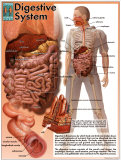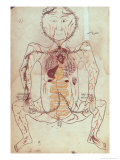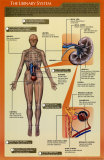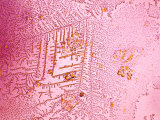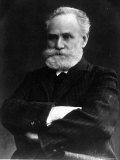|
|
The Digestive System & Urinary Tract Posters & Charts
for the classroom, home schoolers, and medical professionals.
|
science > biology > anatomy > DIGESTIVE SYSTEM < health posters
|
|
The digestive system, also known as the gastrointestinal tract, is the system of organs that takes in and digests food for the nutrients and energy and expels waste. Digestion starts in the mouth with chewing food and the addition of saliva to moisten the food
Digestive system & urinary tract educational anatomy posters Images include the digestive system, the kidney, the liver, disorders of the digestive system, diabetes, ulcers and the dangers of alcohol.
• “I don't know a better preparation for life than a love of poetry and a good digestion.” ~ Zona Gale
|
|
Digestive System
Shows oral cavity, glands, stomach, liver, pancreas, and duodenum. Provides cross sections of wall of the stomach, the jejunum and the colon. Also illustrates arterial supply.
• nutrition posters
• food - culinary posters
|
|
|
|
Digestive System
Poster Text: The digestive system is responsible for taking in the food we ear and converting it in to nutrients that the body uses to sustain itself. The digestive system performs two functions: breaking down food into small molecules, and absorbing these molecules into the body. These process allow the nutrients from the food to enter your blood system in order to be distributed throughout your body. These nutrients are used to produce energy and a building blocks for growth and repairing tissues. ...
• body systems 2
|
|
|
|
Digestive System
Illustrates digestive system by showing a 12-step path of food from bite to “the end of the line,” and includes the role of each major organ in the process. Talks about teeth, their role in the digestive process and includes the right way to brush. Illustrates and describes the components of a healthy diet. Includes fun facts (“Borborygmy (Bore-bore-RIG-mee) is a word for the sounds your digestive system makes when it is working!") and includes answers to questions like “What is a burp?” and “Why do I throw up?”
• Blueprint for Health posters
|
|
|
|
Anatomical Diagram of the Human Circulatory and Digestive System, c. 1425-50
|
|
|
|
Digestive System Diseases
Chart illustrates how structures change from a normal to a diseased state. Eight conditions are shown using this engaging and interactive technology: # Gallstones # Gastric Ulcer # Acute Pancreatitis # Colonic Polyps # Appendicitis # Diverticulosis of the Colon # Ulcerative Colitis # Hemorrhoids
A lenticular is a printed image that shows depth and motion as your viewing angle changes.
|
|
|
|
The Liver
Shows location of liver on the body and provides antero-visceral view of the organ. Illustrates the distribution of vessels and ducts, duct system with gallstones in common sites, and two views of liver segments: visceral view with biliary draining areas and posterior view. Also shows portal system, liver lobule, and cirrhosis.
|
|
|
|
Understanding Ulcers
Defines Ulcers. Shows the stomach and cross-sections of esophagus, duodenum, and stomach layers. Illustrates what cause ulcers and the types of ulcers (erosion, acute, and perforating). Also includes small photos of the types of ulcers. Also includes a section on how ulcers heal.
|
|
|
|
The Kidney
Shows kidney and surrounding organs, veins, and arteries. Illustrates sectioned left kidney and provides a close-up view of pattern of parenchyma of kidney. Also shows nephron, renal corpuscle (including fine structure) and histology of juxtaglomerular apparatus.
|
|
|
|
Understanding Diabetes
Defines both type 1 and type 2 diabetes. Lists symptoms of both types of the disease. Describes insulin and illustrates its role in the body and shows the steps in glucose metabolism. Briefly describes hyperglycemia and hypoglycemia. Discusses long-term health problems and healthy lifestyle changes.
• endocrine system posters
• diseases / disorders posters
|
|
|
|
Dangers of Alcohol
Illustrates and discusses how alcohol affects the nervous, cardiovascular, and digestive systems. Shows the process of alcohol absorption and its affect on the liver. Also talks about reproductive side effects, including risks to an unborn baby. Further discusses other consequences of alcohol abuse and defines intoxication.
|
|
|
|
Taste
While a newborn has taste buds all over the inside of the mouth, adults' taste buds are mainly on the surface of the tongue. An adult has as many as 10,000 taste buds. Taste bud cells last only a week before being renewed by the body.
The sense of taste works in conjunction with the sense of smell to create flavor. The taste of food is a combination of several factors, including the feel of the food in the mouth, its smell, and its appearance.
The temperature of food also influences taste. When food is warm or hot, it releases more chemicals into the air. These trigger our sense of smell, which increased flavor. Heat increases the flavor of sweetness, while cold decreased it. Taste buds also seem to work better at warmer temperatures.
Taste buds on the tongue are located around the base and sides of papillac.
BITTERNESS is tasted at the back of the tongue.
SOURNESS is tasted along the sides of the tongue.
SALTINESS is tasted along the side at the front of the tongue.
SWEETNESS is tasted at the front of the tongue.
• more senses posters
|
|
|
|
Urinary System
Poster Text: The urinary system is responsible for filtering waste from the blood and removing it from the body. To begin the process, the renal arteries transport blood into the kidneys. These arteries contain small branches at their ends that allow them to enter the nephrons, which remove harmful substances from the blood. As the kidneys clean the blood, liquid water - known as urine - is produced. Once the kidneys have filtered the blood, the urine passes through the ureters to the bladder. Here the urine is stored until it is expelled from the body. ...
|
|
|
|
Diseases of the Urinary Tract
Comprehensive chart illustrates the following diseases: chronic pyelonephritis, multiple renal calculi, glomerulonephritis, acute renal failure, staghorn calculus, papillary necrosis, renovascular hypertension, renal artery stenosis, adenocarcinoma of kidney, transitional-cell carcinoma of renal pelvis, hydonephrosis, transitional-cell carcinoma of ureter, cysts in ureter, kidney stone obstructing the uter, ureteral structure, compression of ureter, transitional cell carcinoma of bladder, bladder stones, bladded divericulum, neurogenic bladder, benign prostatic hypertrophy, prostatitis, adenocarcinoma of prostate, urethral structure, urethritis, cystitis, cystica glandularis, and carcinoma of the urethra.
|
|
|
|
Keys to Healthy Eating ~ Spanish (Claves Para Una Alimentaci, n Saludable)
This informative and completely updated chart covers all the major topics for good nutrition and health, available in English and Spanish. It contains excellent descriptions of fats, types of cholesterol, carbohydrates (including the Glycemic Index), protein, and fiber. A table of the benefits and sources of vitamins for various life stages is included. The chart provides visual comparisons of portion sizes of food with other common items (e.g., a cup of pasta is about the size of a tennis ball). Other features include a step-by-step guide on how to read a food label and information on the latest food pyramid.
• Spanish charts
• nutrition posters
• food - culinary posters
|
|
|
|
Saliva
Digestion of food starts in the mouth with saliva, the watery, and usually frothy substance produced in the mouths of humans and most other animals that moistens food so it can be swallowed easily.
|
|
|
|
Ivan Petrovich Pavlov
b. 9-14-1849; Russia
d. 2-27-1936; Leningrad
Ivan Pavlov, physician, physiologist and experimental psychologist, was awarded the 1904 Nobel Prize in Physiology or Medicine for research on the digestive system. He is best remembered for being the first to describe “classical conditioning” learning that involved the the salivary glands of dogs.
Pavlov quotes ~
• “It is clear to all that the animal organism is a highly complex system consisting of an almost infinite series of parts connected both with one another and, as a total complex, with the surrounding world, with which it is in a state of equilibrium.”
• “It has long been known for sure that the sight of tasty food makes a hungry man's mouth water; also lack of appetite has always been regarded as an undesirable phenomenon, from which one might conclude that appetite is essentially linked with the process of digestion.”
• Ivan Pavlov: Exploring the Animal Machine
|
|
previous page | top
|
|
I have searched the web for visual, text, and manipulative curriculum support materials - teaching posters, art prints, maps, charts, calendars, books and educational toys featuring famous people, places and events - to help teachers optimize their valuable time and budget.
Browsing the subject areas at NetPosterWorks.com is a learning experience where educators can plan context rich environments while comparing prices, special discounts, framing options and shipping from educational resources.
Thank you for starting your search for inspirational, motivational, and educational posters and learning materials at NetPosterWorks.com. If you need help please contact us.
|
|
|






